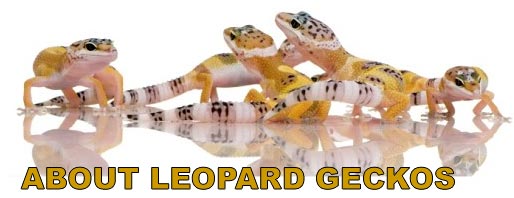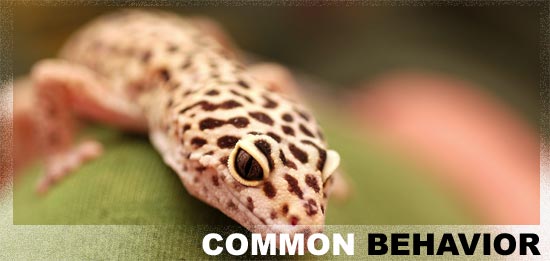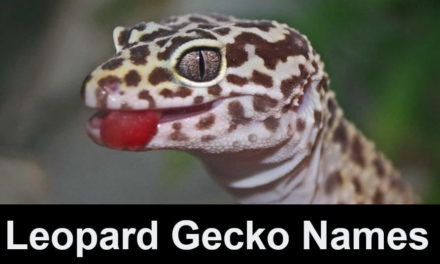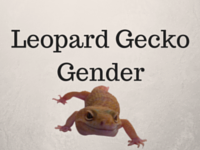
Let’s talk about a fascinating creature – the Leopard Gecko. Known scientifically as Eublepharis macularius, this critter is a crepuscular, ground-dwelling lizard that calls the deserts of Asia its home. The name Eublepharis is a mash-up of two Greek words – Eu (good) and blephar (eyelids). What’s cool about this? Well, it’s their eyelids that set them apart from other geckos. The term macularius comes from the Latin word macula, which means “spot” or “blemish”, a nod to their natural spotted markings.
Why Leopard Geckos Make Great Pets
Since the 1970s, Leopard Geckos have been a hit in the pet world. Why, you ask? They’re pretty low maintenance, don’t need a ton of space, and aren’t too needy. Plus, they have lifespans of up to 20 years! That’s a lot of time to bond with your scaly friend. They’re also a great choice for first-time reptile owners.
And for those with a creative streak, you can breed them to create Leopard Gecko Morphs – offspring with different patterns, colors, and sizes. This makes them popular among reptile enthusiasts too.
Leopard Gecko Origins and Unique Traits

Most pet Leopard Geckos trace their roots back to the desert regions of Afghanistan, Iran, Pakistan, and parts of India.
Unlike other lizards, they lack adhesive lamella (tiny scales covered by microscopic hair-like structures), which means they’re not great climbers. But don’t be surprised if you see them scaling rocks and hides at night. They also have tiny claws that come in handy in sandy environments.
Their unique colors and spots are perfect for blending into their surroundings. And boy, are they good at hiding! As nocturnal creatures, they stay out of sight during the day (avoiding the hot sun), shedding their skin to keep their scent hidden.
Creating a Comfortable Home for Your Gecko
The leopard gecko comes from a unique environment that their bodies are specially designed for. So it’s up to us owners to make sure their enclosure is almost the same as their natural habitat (see Creating Your Ideal Leopard Gecko Enclosure Design).
Leopard Gecko Body Language & Behaviour
Reptiles often rely on behavior or body language as a way to express themselves.

- Climbing their tanks is a normal behavior, but can also be a sign that they are uncomfortable with their environment. Since leopard geckos are nocturnal they tend to hide all day until night. Be concerned if they have not left their hide for 24 hours or more. This may mean that their tank may not have the right temperature and they feel ill. Make sure they are not displaying any types of abnormal behavior.
- Leopard Geckos make a high pitched squealing or yelping sound whenever they are surprised or startled. It’s actually kind of amazing to hear how much noise they can make, seeing how they are just a tiny little lizard. This is most common with younger leos and occasionally with adult geckos. However, normally leos don’t make any sounds at all.
- Tail biting among Leopard Geckos shows dominance and happens whenever they are mating.
- It is not uncommon to see leopard geckos flicking their tongue. It’s their own way to familiarize themselves with new items in the tank, which allows them to sense objects and their environment.
- Digging is another thing leopard geckos do. Not just a pregnant leo will do this, but also males too (if they have a substrate they can dig in). They do this to move the sand around to where they want it so they can burrow in it the way they see fit.
In conclusion, Leopard Geckos are fascinating creatures with unique behaviors and traits. They make great pets and are easy to care for, making them a popular choice for both novice and experienced reptile enthusiasts.
Common Questions About Leopard Geckos
What is the scientific name for a leopard gecko?
The scientific name for a leopard gecko is Eublepharis macularius.
Do leopard geckos have teeth?
Yes, leopard geckos do have teeth. They are small but sharp, and they use them to catch and eat their prey.
How long does a leopard gecko live for?
Leopard geckos can live up to 20 years, making them long-term companions for those who choose to keep them as pets.
Where do leopard geckos come from?
Leopard geckos are native to the desert regions of Afghanistan, Iran, Pakistan, and parts of India.
Do leopard geckos sleep with their eyes open?
No, unlike some other reptiles, leopard geckos have eyelids, so they do close their eyes when they sleep.
Do leopard geckos yawn?
Yes, leopard geckos do yawn, often as a way to realign their jaws after a meal.
Why is my leopard gecko awake during the day?
Leopard geckos are primarily nocturnal, so if your gecko is frequently awake during the day, it could be a sign of stress or discomfort. Check their habitat conditions to ensure they are optimal.
Do leopard geckos climb?
Leopard geckos are not great climbers due to the lack of adhesive lamella. However, they can climb over rocks and hides in their enclosure.
Why is my leopard gecko sticking his tongue out?
Leopard geckos often stick their tongues out to explore their environment and get a sense of the items in their tank.














My albino leopard gecko has been hissing at me when I put my hand in the tank. What do I do?
Best thing is to take it slowly – here’s our guide on how to tame a leopard gecko. People are big and scary to a little gecko at first, so take things one step at a time so they get used to you. Before long you’ll be able to pick them up and they won’t be scared any more.
Hey, I noticed that when my leopard gecko, Nari, sheds her skin there are little dried skin bits still stuck to her. Is this normal?
Yes and you should either soak it in water or peel it off with tweezers.
My gecko won’t eat calcium. What do I do?
My leopard gecko one day as I was feeding him got spooked and started wagging his tail and then lunged and ended up freaking out trying to go up the glass. It was like he was throwing his body back and forth in the corner. Since then he has continued wagging his tail in defense mode every time he comes out of his hut. I do have a cat but he has always been happy and content and always only kept an eye on the cat when it walks by the tank, he has never sagged his tail at him really… could his reflection make him continuously on defense mode? I want to move him to bigger tank he is in a 10′ now but am scared to put my hand in.
I don’t think he’s spooked by his reflection, the reptile/fish tanks are made to not reflect that well to prevent that. He could still be spooked by you from the last feeding encounter. If you were feeding him with your hand, switch to tongs/tweezers so feeding won’t stress him out.
I suggest putting your hand inside his tank for a minute or so, just so he’d get used to your physical presence being near him and that you are not a threat. Once he calms down, start moving your fingers slowly, but naturally, so that he can adjust to you moving near him. Do this for about a couple days to a week and it should help. After this, you can try feeding him with your hand again.
Try not to flinch or move quickly if he bites you instead of the food, that’s very common for hand feeding, and Leo’s aren’t very good at aiming 🙂
I keep my Leos in 10 gallon tanks and they’re doing great in them, they just need a lot of enrichment and max 3 hides so they won’t get bored and try to climb up their tank. I’ve added hammocks for them to climb on, you can literally use any non-sharp decor as an enrichment for their tank, they don’t care 🙂 It’s mostly for your own aesthetics. If you really want to, you can always spoil them and switch to a bigger tank if you have the space.
How do I help my gecko when it is struggling to finish shedding?
You can help by soaking him/her in a shallow dish of lukewarm water. Leave him/her for around five minutes, and then try to help get any skin left on the toes and/or tail off.
My gecko seems to hate water. She always has some dried skin stuck to her, should I be concerned?
You can get a tupperware, cut a good sized hole and sand it down or melt it so it’s not sharp, and every day spray it down with a spray bottle, it should be damp. So that way it’s humid and wet so the shed can come off much easier, if the shed doesn’t come off properly it can harden and be too difficult to take off so your gecko can loose a limb.
I have a big family, which might not matter with this anyway, but I have been trying to convince my parents to let me purchase my very own leopard gecko. I have been researching them for a while and know everything I need to know about them to care for them. But both my parents like that I’m interested in reptiles (for educational purposes), but they are a little creeped out by their overall appearance (even though I told them they would barely see them because they are nocturnal). And they are worried about anyone getting salmonella, and everything else she thinks about them is actually wrong and all out of the heebity jeebities. I really am interested in leopard geckos and they are the coolest thing – I’m really tired of just browsing through the web for pictures of them. What do I do?
It took me a while to convince my parents to let me get my pet, but when I got a letter it was perfect! (4 years!!) As long as the tank is kept clean your gecko will not get sick as they are very hardy and I have only had one small incident which was mostly my own error (leopard geckos need heating to properly digest and I fed him before taking him to a place where there was no heating available). There is more work involved with taking care of their food than the actual animal, especially if your leo will eat crickets. Also tell them why they look the way they do. If they’re into educational animals they might think it’s cool how they look. If you did your research correctly you’ll know that they came from the desert, so present the information of how their looks help them to your parents. Good luck!
One small mistake, they do not come from the desert. They come from dry, grassy regions. They do not have sand in their natural habitat, and they do have plant life – unlike a desert.
What does it mean when a leopard gecko lifts its tail and wags it?
Good question :-). You can find more details on tail wagging behaviour here.
I just saw 1 of my females do that last week. It’s so weird but I have no idea why they do it.
Should my heat lamp always be on or should I turn it off at certain times for my leopard gecko?
Do you have an under tank heater (heat mat) as well or just the heat lamp? Also, is it an infrared lamp? And, do you have a thermometer (or two) so you can tell what the temperature is?
Sorry, lots of questions, but the answer depends a lot on what set-up you have (more info here on setting up their habitat) 🙂
E.g. if it’s an infra-red lamp you can leave it on at night, but you need to know the tank isn’t getting too hot. If it’s not infra-red then you should definitely turn it off at night, as geckos are nocturnal and ‘sunlight’ at night is not a good idea :-). But ideally you would have a couple of electronic thermometers so you can easily monitor your minimum and maximum temperatures.
Hello!
One of my neighbors overheard me and my family talking about getting a Gecko and offered me her 5 year old Gecko. I am a little hesitant on the offer because she hardly even touches the Gecko and I’m afraid we wouldn’t bond well? Would you recommend a new one or to take the 5 year old?
Hi, I was wondering if anyone could answer this question I have. My two female leopard geckos, one we have had for a while named Cider, and the other one we just got two weeks ago named Soror.
They have been fine since, until last night. Soror bit the one we have had for a while and Cider bit back. Then tonight, at night time again when we changed the bulb to night, Cider came out to explore and Soror attacked again. Soror is pregnant also but I don’t think that has anything to do with this since this joey started and Soror has been pregnant way before we got her. Can anyone help?
They should be separated for the good of both geckos. Some don’t get along, in which case it will only get worse and their cohabitation is not recommended.
I was just given 2 geckos from the pet store and I’m not sure if they’re sick or not. They are babies about 3/4 inches without the tail. The bigger one was sleeping for a long time and I checked on it and it’s stomach was not getting bigger and smaller (as it does when it’s breathing). I pet it then grabbed it and after a few seconds it finally woke up. The smaller one seems to be sleeping even as it’s being held and moved around. This is during the daytime. Also their tails are not that thick, the smaller one having a thinner tail. They don’t have that outward thickness right at the beginning of the tail as I see in the pics. But their bodies seem fine. They do seem to be more wrinkly than when I first got them… unless I’m imagining it. I’ve had them for about almost a week. Is it OK to keep them free in the house? They get strong sunlight and will bathe in it and I bring them in the bathroom during showers for humidity. Are they supposed to sleep most/all of the day since they are nocturnal? They are awake a lot during the day. They do get active and seem healthy because of this at times. Oh yes, and I was told they were leopards but they don’t have spots, more like patterned blotches, and stripes made of blotches on the tail. They do have nails amd eyelids. The larger one has some orange colors on the back and tail. Would appreciate any feedback as I’m a bit worried.
I have seen a lot in my Leo. I’m new to this so I don’t know a whole lot but my Leo keeps tilting his head. For example, I was talking with my parents today and looked over to see it tilting his head. I dont know if it means it is listening or if it’s just doing it just cause he can.
Hello,
I recently adopted a 10 year old leopard gecko who will only eat wax worms. I want him to be as healthy as possible and he does eat crickets from time to time but I’m not sure how to fix his diet since he’s eaten this way for a decade now. He refuses to eat the meal worms. 🙁
My kids have been begging for a pet snake, but there is no way I could sleep at night with one in my house. I had a leopard gecko growing up and, as you mentioned, they were very easy to care for! I think that this might be a great alternative pet for my kids.
My leopard gecko of 7 years is exhibiting a new behavior we have never seen before. She has been standing like a statue and staring upward either with her eyes open or with the eyes closed. Any thoughts or suggestions????
Actually, that seems pretty normal. Mine do that when they come out at night. Nothing I would be worried about, though.
My gecko appears healthy. Walks with his tummy off the ground. Has little calcium deposits behind his front legs and is an aggressive eater.
That being said it seems to me that he is lethargic at night too. He sort of chills in either of 2 spots on the warm side of his tank.
I dunno, I just want him/her to have a good experience. Thor is shedding today… I hope he was just feeling tired from shedding.
Leopard geckos are always pretty lazy. If he/she is eating good I wouldn’t be worried.
I have four geckos. They are all young. A few weeks ago, one (Blister) bit off the other’s (Blaze) leg. She is fine. She is living in a Kritter Keeper in the tank. I am concerned about the bully. She eats all the crickets and saves almost none for the other two (Burn and Thorn) that are free in the tank. I am thinking of separating her and putting her in 10 gal by herself. I would then reunite Blaze with the others. What do you think? Also- is it normal for leopard geckos to show signs of dominance or leadership? Thanks.
Yes, I would go ahead and separate them. Some females just don’t get along with other females. So they have to be housed separately. Blocking food is a sign of “bullying.”
Please help, I just got my new baby Gecko yesterday, she hasn’t come out but a few hours at all.
Only a hour for the two nights she has been here.
Also I moved her hide to see if she was hurt but she was fine, she raised her tail high but I put my hand close to her and she licked me.
Are these all normal?
Don’t worry it’s perfectly normal for leopard geckos to not come out much when you first get them. It stresses them out when they are placed in a new environment, but eventually they will get used to it.
When they wave their tail they are getting used to their surroundings. It’s mostly like they are letting you know they are there. If she licked your hand she is smelling you. They smell through their tongue.
All of this is normal.
I came across your post as I was doing some research on leopard geckos because my son has been begging me for one. Thankfully because of your page I now know that they are low maintenance pets – this was actually a main concern of mine. I’m actually fascinated by their behavior as described in your post! It’s also good to know what they are trying to say when they open their mouth wide. Is sand substrate recommended for their tank since digging is something they would instinctively do? Thanks for sharing.
Lovely article. I´m planning on getting a Leopard gecko (my first reptile) and heads up about getting a see-through cave is exactly what I needed. Only one of the caves I have put on my shortlist is see through so that made the cave choice easy… 😀
Interesting! I never had reptiles, I am more of a furry animal person but I do enjoy seeing them at the local animal store. My daughter asked me for a lizard and since I don’t know much about them your website seems like a great tool for learning. Best wishes.
Thanks I hope you learn lots about leopard geckos here 🙂
Wow, loads of info on these guys, thanks! So the screeching sound is nothing to worry about, lol cool. Leopard geckos are a neat pet to have but I didn’t know there was so much you need to know about them. To care for them properly I mean. All in all they are a great pet to have!
Great job on the website!
No don’t worry about the sound. Mine yawn and give out a little squeak when they wake up. Kind of funny 🙂
Thanks for sharing this informative post on leopard geckos and their behavior.
We have a leopard gecko that we got for our son last year for his birthday.
Mordecai likes to come out late in the evening after the night light has been on for a few hours. His favorite spot is to hang out on top of the rock cave and chill there. It looks like he’s watching TV, LOL
My son loves to take his gecko out of his tank a lot, is it advisable to do this as I am concerned it’s too much?
I like the name Mordecai. Yeah my oldest leopard gecko Sly likes to come out and sit on her tall rock at night too.
It’s fine to take your leopard gecko out as much as you want. It gets them used to you. I take mine out daily too.
Hi,
Wow, your articles are so helpful.
Anyone who wants to get a leopard gecko will find anything they need right here all in one place.
I love the fact that you said they live long because we’ve tried bunny’s, fish, hamsters, birds, cats and dogs. You know kids, when they hear something can be a pet, they want it.
Although we still have 2 dogs, none of the other pets survived. Not because we don’t care for them, our fish was the biggest goldfish anyone has ever seen – he just got too old too fast.
Thank you for guiding us in our next decision.
These leopard geckos look really cool and their behavior is strange to me, though. Now, I know what to look out for.
Linda
Very Imformative Post. The part about the tail biting was hilarious to me! 😀
I would actually like to have a Leopard Gecko as a pet, but what do you think my dogs’ responses will be to that? They are very curious about little animals, especially the lizards in the garden!
Do you think that these geckos scare easily? I wouldn’t want them dying within the 1st week.
With dogs and cats I wouldn’t hold your gecko while they are in the room. It will scare the gecko and they will probably freak out and hide. Not to mention your dog or cat might end up killing them. Just make sure you get a lid and put something heavy on it. Sometimes dogs and cats like to mess with geckos.
They have a really long life span for such a small animal. 6 years average and with proper care 20 years. They will definitely not die in the first week. But yes very cute animals.
Yep 20 years is longer than most dogs :). Glad I got mine for at least 16 more years to go.
Hi,
It really interesting to learn about the different creation on earth. It is the first time I actually heard of this type of reptile. To be honest I freak out if i do see any of these in my house, lol :-p.
Am South African, is it common to find these reptiles in my area? also are they harmful?
There are about 22 lizards that are native to South Africa. The leopard gecko isn’t one of them: https://en.wikipedia.org/wiki/Category:Lizards_of_South_Africa
No, leopard geckos are not harmful at all. They are pretty low on the food chain. The only thing below them is bugs. Leopard geckos don’t even have teeth. They would rather drop their tail and hide if they feel their life is in danger. Very peaceful lizards.
Another thing leopard gecko’s like to do is climb their rocks at night. I woke up last night and was surprised that my leopard gecko was sitting on her long rock. She had to climb up really steep to get there, though. Is that normal?
Yes, that is normal. My female Sly always climbs a very steep rock and sits there at nightime. One thing I have learned over the years is that leopard geckos like to explore a lot. Make sure you have them in either a high terrarium or a something heavy on the lid. One of my geckos Speedy loves to escape all the time. She has escaped 4 times now!